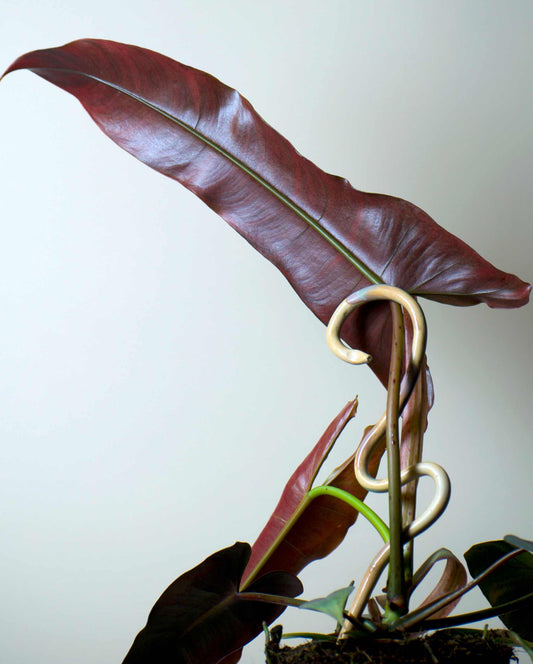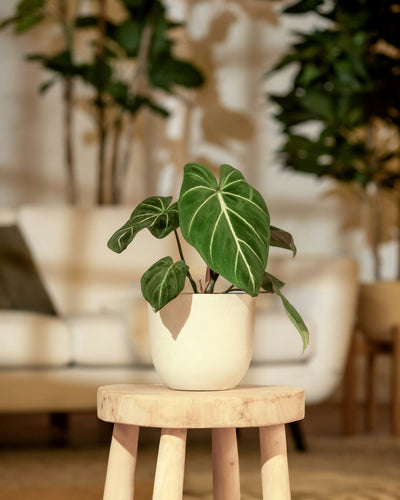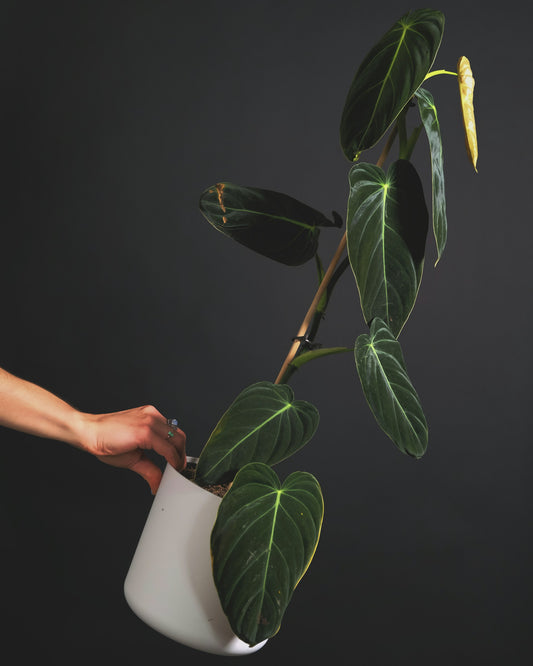Share
Philodendron gloriosum | The houseplant with large green leaves, care guide.
Philodendron is a creeping plant, meaning it grows horizontally, along the ground rather than climbing. Grown in a pot it can become a really large indoor plant if given the right care. With leaves that can reach almost 1 meter in length, the plant can be incredibly beautiful.

Brief botanical information about Philodendron gloriosum.
Philodendron gloriosum originates from the philodendron genus in Central and South America. This particular species of philodendron comes from the northern Amazon in Brazil and Guyana. It is a ground-creeping plant and is well suited for indoor cultivation as it normally thrives in low light levels on the jungle floor.
Care of Philodendron gloriosum
Despite its tropical origins , Philodendron gloriosum is surprisingly easy to care for and only requires a few simple tips to thrive:
1. Oblong plastic pot:
Because this Philodendron has a creeping habit, round pots are not the best container to grow this green plant in. It creeps forward extremely quickly and becomes drooping outside the pot. When growing Philodendron, it is important to try to ensure that the stem is always next to either a plant support or the soil in the pot.
Plants in the philodendron genus have nodes on their stems (the place where new shoots, roots and leaves come from). These nodes prefer to send out roots and root themselves onto a support such as a climbing plant or directly into the soil for plants such as Philodendron gloriosum.
When the nodes of the stem are allowed to root, new leaves can grow large. The recommendation is therefore to plant this Philodendron in an oblong pot. This allows the plant to creep forward without having to repot constantly.

Philodendron gloriosum creeping along the ground outdoors in the tropics. Photo: joice fadell Apr 11, 2022
2. Indirect light:
Philodendron gloriosum thrives in bright but indirect light. Too much light can cause yellow leaves, while too little light can stunt growth. Place the plant in a room with a sunny window. Protect it from direct sunlight with a curtain or by placing it some distance from the window.
3. Well-drained soil :
A soil mix for Philodendron or other epiphytic houseplants like orchids is a good choice. These types of soil try to mimic the plant's natural environment. If you want to mix your own, a mix of coco coir, perlite, and vermicompost is great.
Here you will find our soil mix we use for Philodendron gloriosum.
4. Watering :
Keep the soil lightly moist, but avoid getting it soggy. As a member of the cold-hardy plants, Philodendron gloriosum likes an even moisture level but is sensitive to overwatering.
5. Humidity :
Philodendron gloriosum appreciates high humidity. A location in the bathroom (if the bathroom has a window) or near a humidifier is an advantage but not a requirement.
6. Pest.
Common pests on green plants like philodendrons are thrips, spider mites and aphids. Inspect the leaves regularly, especially under the leaves where insects like to hide. Rinse the leaves with water from time to time and for proper protection you can buy beneficial insects. These small insects feed on pests and come in small bags that are easily hung on the plant.
You can buy livestock here.

Summary
This philodendron can become a very large plant indoors, where it can spread its large, green leaves and create a tropical feel. With its large, beautifully veined leaves and ability to adapt well to indoor growing, it is popular with plant lovers looking for a plant that is both decorative and easy to care for.











